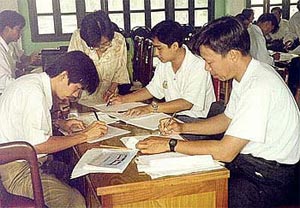How to build consensus
What is a consensus?
A consensus is an agreement in opinion about an issue. It helps build support for the planned activities.
Why build consensus?
It is important to build a consensus in order to develop a shared understanding and agreement of a theme.
How is consensus built?
1. Set basic rules of session:
- No criticism is allowed – only clarification,
- Points can be debated, but not the people involved,
- The chair of the session has the right to move the process along,
- Personal debates and discussions can be continued after the meeting,
- Be professional – not personal.
- Identify someone to record meeting output.
- The chair of the session ensures discussion is focused on issues not people.
2. Collecting input - Have participants write down on a card in one or two sentences their understanding of the point or task being discussed (e.g., problem, project goals, etc.).
3. Sorting input - Sentences are placed on a board and grouped. Commonalties of understanding as well as diversions from consensus become obvious - and become discussion points for further clarification.
Organization of a meeting
Consensus-building needs to be done in groups that are not threatened by any hierarchy in the group. Participants should not feel any intimidation but rather feel that they are sitting around the table as equals. If participants do not feel as equals around the table, they will not openly express their views, as they are conscious of more ‘senior’ staff, more ‘expert’ staff or outsiders being present.
To help resolve this possible obstacle, two options are available:
- Bosses and/or experts may choose not to sit in the meeting or part of the meeting to make sure the groups are truly expressing their own opinions and not simply giving the senior person the information they think the senior person wants to hear.
- Prior to the meeting, build the confidence of participants by encouraging them to think about and discuss the issues among themselves so that they come to the meeting prepared.








